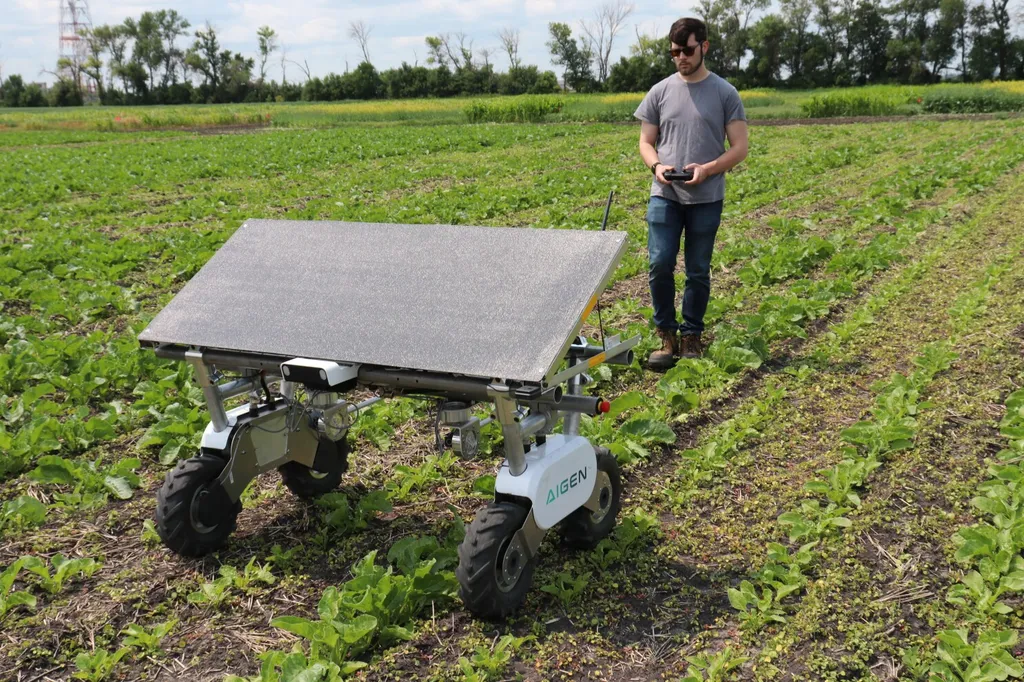In the heart of Germany, a groundbreaking study is challenging the status quo of weed management in sugar beet fields. Researchers, led by Sonja I. Kimmel from the Weed Science Department at the University of Hohenheim, have been putting six robotic-assisted weed control systems (RAWS) through their paces, with promising results that could reshape the future of precision farming.
The study, published in ‘Plant, Soil and Environment’, is a beacon of hope for sustainable agriculture. It demonstrates that robotic weeding systems can match, and even outperform, traditional broadcast herbicide applications in terms of weed control efficacy (WCE). This is a significant step forward, especially considering the increasing demand for sustainable and environmentally friendly farming practices.
The experiments were conducted under challenging conditions—dry soil and high weed pressure—in 2024. The RAWS included sensor-based inter-row and intra-row hoeing, spot- and band-spraying, and were compared to a broadcast herbicide treatment and an untreated control. The results were impressive. Two hoeing robots, Farming GT® and Robovator®, equipped with selective intra-row blades, achieved up to 80% WCE, surpassing the broadcast herbicide control’s 67%.
In the inter-row area, Farming GT® robotic hoeing and ARA® spot-spraying resulted in more than 90% WCE, matching the broadcast herbicide application. “This is a clear indication that robotic weeding systems can be a viable alternative to traditional methods,” Kimmel noted.
The study also found that weed species composition was not affected by the different RAWS, and while crop plants were affected by all hoeing treatments, the damage was non-lethal, with a maximum burial rate of 33%. The highest lethal uprooting of crop plants occurred after Farming GT® robotic hoeing, at 5.5% overall.
The commercial implications of this research are substantial. As the agriculture sector grapples with the need for sustainable practices and the challenges posed by herbicide-resistant weeds, robotic-assisted weeding systems offer a promising solution. They can enhance precision farming, reduce environmental impact, and potentially lower input costs for farmers.
Looking ahead, this research could spur further advancements in the field. As Kimmel suggests, “The great potential of robotic weeding to replace broadcast herbicide applications is evident. With further refinements and advancements in sensor technologies and artificial intelligence, we can expect these systems to become even more efficient and widely adopted.”
In the quest for sustainable agriculture, this study is a significant milestone. It underscores the potential of technology to revolutionize farming practices, offering a glimpse into a future where robots and AI play a pivotal role in ensuring food security and environmental stewardship.

